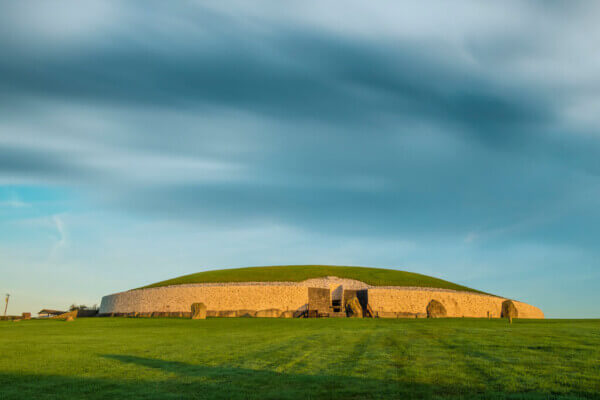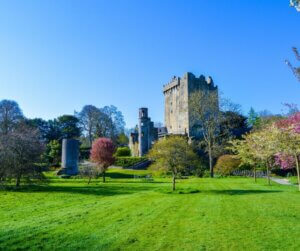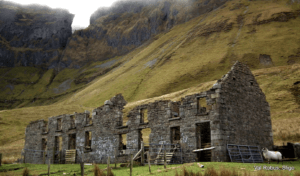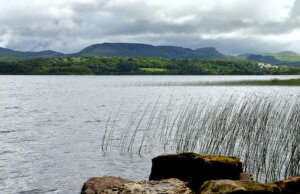Everyone knows that Ireland has stunning scenery, friendly people, and an unmatched rugged landscape, but there’s more to Ireland than first meets the eye. Finding the best authentic experiences is one way to unearth what Ireland is all about.
 This post and page contain affiliate links and I may earn compensation when you click on the links at no additional cost to you.
This post and page contain affiliate links and I may earn compensation when you click on the links at no additional cost to you.
For me, the interesting thing about Ireland is that it caters to everyone, including tourists who want to see big city attractions but others who are eager to delve into the real Ireland to discover the age-old traditions that are still in use today.
Finding the best authentic experiences in Ireland might take a little digging in guidebooks and other sources.
If you’d rather ditch the homework that’s needed to uncover some of these hidden gems, no worries.
Just read on to discover some of my picks.
Cutting Turf Experience
“Cutting the turf” is a practice that has been done in Ireland for generations.
It was and still is prevalent in the west of the country and in parts of the Midlands and should be on your list when finding the best authentic experiences in Ireland.
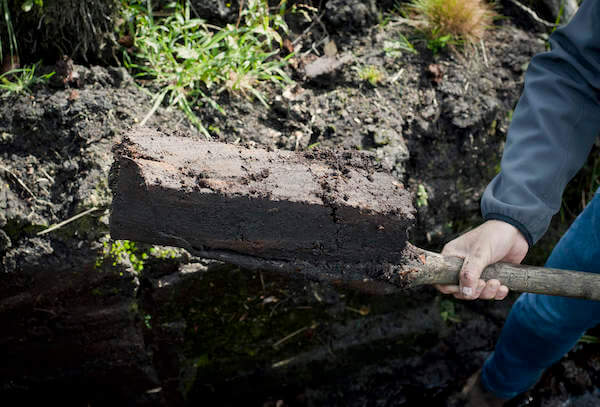
Turf, which comes from Ireland’s rich bogland, can be found in a unique landscape and one that contains different plants and animals that survive best in this harsh, wet, and nutrient-poor environment.
Some of them include the plants known as black bog rush, sundews, and sphagnum moss. The bog spider, dragonflies, and otters make their home here also.
It is also the fuel that most Irish people used to heat their homes and cook their food for years.

Between 1814 and 1907, turf cutting was at its most popular, with about 800,000 acres of turf cut away. During World War II, when no coal was being imported into Ireland from England, turf was an invaluable fuel to Irish families.
While many Irish farmers use a machine to cut turf, some still do it by hand. In the past, the turf was cut using a two-sided spade known as a slean (pronounced “schlawn”).
Whole families were often involved in the activity, which involved turning the turf to dry it after the cutting, a somewhat lengthy process given the nature of the Irish weather.
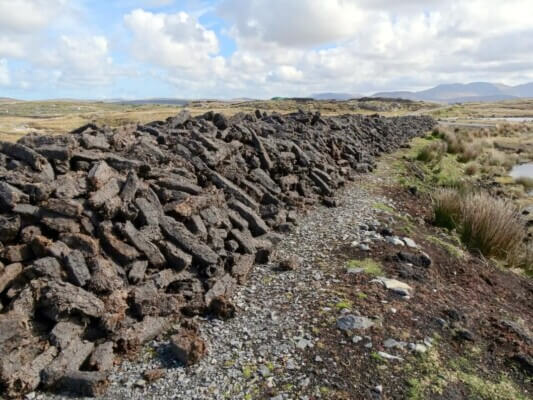
The turf was then placed upright in stacks for further drying before it was brought home by a donkey and cart.
“Footing the turf” was considered a back-breaking job and no doubt children in many Irish households were unhappy about being asked to participate.
In Carracastle, Co. Mayo, heritage farmer Eddie Joe Dooney of Ireland West Farmstay gives visitors a chance to participate in turf-cutting themselves through his Ireland West Bog Experience.
Eddie Joe explains the difference between the living bog and the working bog and their intrinsic connection with rural Ireland while pointing out the unique plant life that exists in these environments.
He also includes a guided tour of his local village Carracastle, which is halfway between Charlestown and Roscommon, and a 15-minute drive from Ireland West Airport.
If you’d like to experience what life was like in an authentic Irish home, Eddie Joe invites guests to stay in his renovated 19th-century cottage, which has been in the family since before Ireland’s Great Famine.

Other tours offered by Ireland West Farmstay include a blacksmithing demonstration, a traditional farm tour, a village walking tour, and traditional Irish music by the fireside.
Go to Ireland West Farmstay for more information on that and other experiential tours.
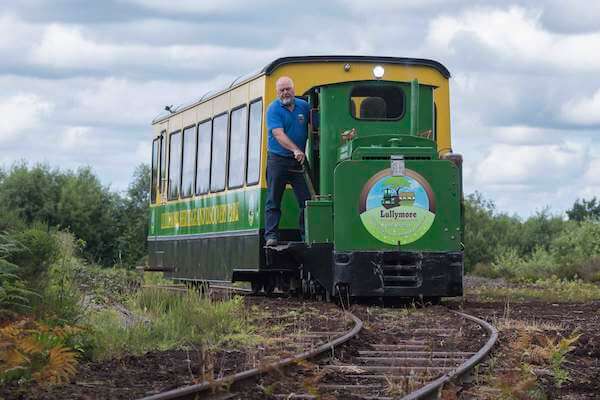
You can learn more about Irish bogs in general at the Lullymore Heritage Park in County Kildare when you sign up for its Peatland Biodiversity Trail excursion. You can do so much at this great attraction, including taking the Lullymore Road Train, a 10-minute ride through the park's ancient woodlands as well as its outstanding peatland and lake areas, where wildlife flourishes.
The heritage park also includes a number of other interesting features, including the 1798 John Doorly House, which was built to commemorate local man John Doorly, a captain in the revolutionary group, The United Irishmen; the Emigration Cottage, prehistoric settlements, a fairy village and lone fairy bush, as well as an early Christian exhibition.
Enjoy an Authentic Seaweed Bath
After a day of turf-cutting, you’ll no doubt want to relax.
What better way to do it than in a hot seaweed bath?
Seaweed baths have been synonymous with Irish seaside towns for more than 100 years.
During the late 1800s/early 1900s, there were approximately 300 of them dotted around the Irish coast.

One that comes to mind is in Enniscrone, Co. Sligo, a pretty seaside resort that boasts a 3-mile-long beach (close to 5 kilometers).
Before Kilcullen’s Seaweed Baths opened in 1912, there was an older bathhouse along the shore nearby that was built in 1850 by the Orme family, who owned extensive property in the local area.

The Edwardian building that you see today has been modernized a bit, but you’ll still see reminders of a bygone age as you step into the large porcelain bathtub with its solid brass faucets (taps) and then bravely sit in the old-fashioned wooden sauna boxes, only to be shocked by the coldness of the water when you pull the chain above.
All-in-all, it’s a thoroughly enjoyable experience, and healthy too.
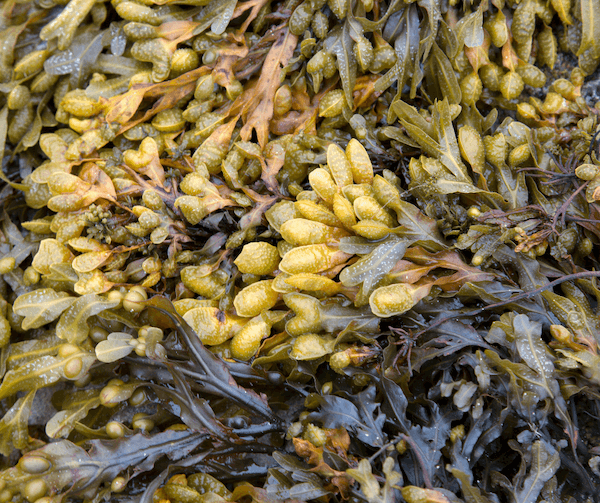
Seaweed is known for being high in vitamins and minerals, properties that soften the skin, improve circulation, and provide relief from arthritis, among other ailments.
This is a uniquely Irish treat, so be sure to book a seaweed bath when you’re next in Ireland.
Other seaweed baths in Ireland include Voya Seaweed Baths in Strandhill, also in County Sligo; Collins Seaweed Baths in Ballybunion, County Kerry; Connemara Seaweed Baths in County Galway, and Sólás na Mara Seaweed Baths in County Waterford.
Forage for Seaweed on the Wild Atlantic Way
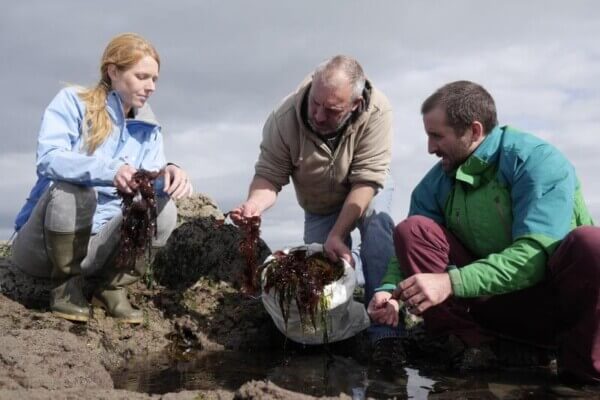
Try your hand at seaweed foraging on the County Mayo coastline with Denis Quinn of Wild Atlantic Cultural Tours. This Ireland on a Budget Tourism Ambassador offers walking tours giving participants the opportunity to hunt for seaweed along the shore.
The 3-hour tour takes in the local geology, flora, and fauna of the region.
In Derrynane, County Kerry, take a seaweed discovery walk with guides from Atlantic Irish Seaweed.
You can learn about the rich history of seaweed use while walking along the shore and later visit an archaeological site where the country's earliest settlers are believed to have lived on seaweed, fish and shellfish.
In Connemara, feast on abalone, a large marine gastropod mollusk by taking a combination abalone tasting tour and enjoying a coastal walk foraging on the shores of Galway Bay.

Mungo Murphy's Seaweed Co. is run by mother-and-daughter team Cindy and Sinéad O’Brien. Mungo Murphy is a fictional character that they created and that serves as the face of their brand.
The female entrepreneurs produce some of the region's finest abalone, sea cucumber, sea urchin and seaweed products from their aquaculture farm in this Irish-speaking area of Ireland.
Get Wifi in Ireland with Wifi Candy – take 10% off with code IOB2024
Get Up Close to Ireland's Once Extinct Brown Bear and Other Animals
Wild Ireland is first and foremost a sanctuary for exploited animals, but it is also a wonderful visitor attraction located on the Inishowen Peninsula in beautiful County Donegal.
Imagine you’re in ancient Ireland with its dense woodlands, where brown bears, grey wolves, Eurasian Lynx, and Wildcats roamed freely.

That’s exactly the kind of natural environment that has been created by Killian McLaughlin, locally known as the “Bearman of Buncrana.”
It’s an authentic experience that will allow you to journey through the past and give you an insight into Ireland’s lost wildlife.
Archaeologists know that the brown bear existed in Ireland from the many bear bones that have been found in caves there. DNA evidence suggests that these bears may be the ancestor of the modern Polar Bear.

There are many wild birds at Wild Ireland, too. They include swans, geese, ducks and even an otter.
Red foxes, crane, wild boar, deer, capercaillie (a member of the grouse family), snowy owls, wildcats, and barn owls are also among the menagerie of wild animals in this great authentic Irish attraction.
A visit to Wild Ireland is ideal for both young and old, but I’m sure if you have kids in tow, they’ll absolutely love it, especially the fairy trail around the rainforest as well as a play park that is also on the property.
Netflix UK and Ireland have picked up a 2020 documentary called “The Bearman of Buncrana,” which was originally shown on Ireland's national television station, RTE.
It will begin airing March 1st on Netflix. No word yet on when it will be available for viewing on Netflix here in the U.S.
You can purchase tickets to Wild Ireland here. If you are interested in donating to McLaughlin's wildlife conservation efforts, head to the website's Support Us page.
Learn to Bake Irish Soda Bread
Irish soda bread is known the world over, especially on St. Patrick’s Day.
But the trouble with much of the soda bread you’ll find abroad (at least here in the U.S.) is that it contains raisins, and that’s really not what the authentic Irish soda bread is like.
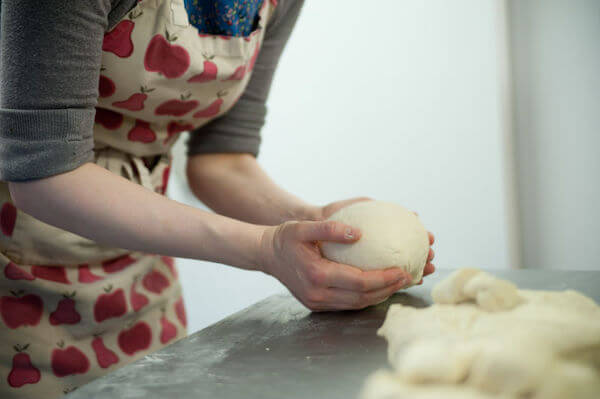
If you’re curious about how to make Irish soda bread, you’ll find a great teacher in Kate Wright, the owner of Kate’s Place café and cookery school in Oranmore, Co. Galway.
The café is known for its delicious fare, including its gluten-free desserts and a wide range of savory dishes.
In Westport, County Mayo, learn how to bake brown bread and traditional Irish scones with Carmel, a former home economics teacher, and Mary, a Failte Ireland-approved tour guide. The duo, who created The Irish Soda Bread Way in 2019, offer this delightfully authentic Irish experience from The Clew Bay Hotel right in the heart of this popular tourist town.
The two-hour class also includes the opportunity to have a cup of tea whjile gaining an insight into Irish food culture and heritage. A tote bag of goodies and a complimentary Irish coffee is also included.
Check Out Other Cooking Classes in Ireland
Try Your Hand at Hurling, the Ancient Sport of Ireland
Fancy learning how to play hurling, one of the world’s oldest sports?
This very fast and exciting game is mentioned in some of Ireland’s oldest texts, where the Irish mythological hero Cuchulainn is said to have played hurling, as well as Fionn Mac Cumhail of the Fianna.

If you’re in Kilkenny, one of Ireland’s great hurling counties, be sure to sign up for a two-hour hurling class with The Kilkenny Way: Ultimate Hurling Experience.

In Ireland, Kilkenny is regarded as the home of the hurling champions The Kilkenny Cats. The team has won a total of 34 All Ireland Senior hurling titles.
There are a variety of tour packages available, including The Tourist Package, The Family Package, The Corporate Package, The Club Package, and more.
Walk in the Stone Passage at Newgrange
Finding the best authentic experiences in Ireland means visiting Newgrange, considered one of Ireland’s most important archaeological sites.
It is part of the Brú na Bóinne complex in Co. Meath, about 34 miles (55 km) from Dublin.
There are approximately 90 other archaeological sites in the area, including two other passage tombs known as Knowth and Dowth.
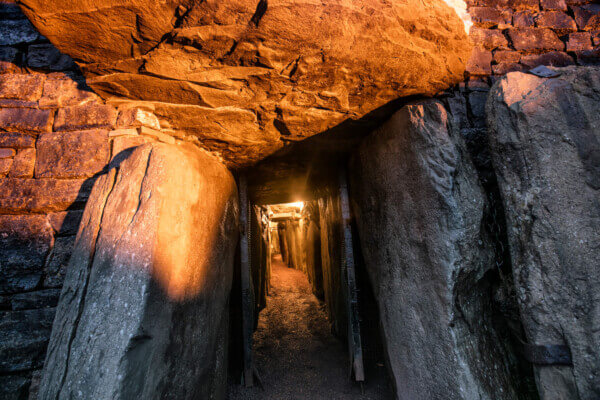
Experts believe that the Late Stone Age passage tomb was constructed about 5,000 ago, predating the Egyptian pyramids.
Once you get inside the passage tomb, you’ll agree that it is a phenomenal experience and one of the best authentic experiences in Ireland.
The inner chamber, where human bones and objects of religious significance were found, is a small room with a vaulted ceiling. It has remained intact since its completion in 3,200 B.C.
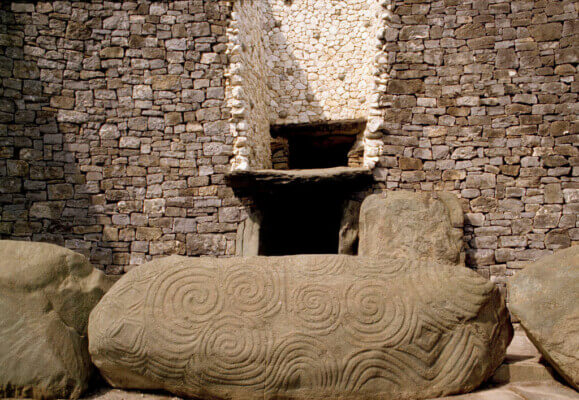
Even before you enter the chamber, you’ll be fascinated by the 4-foot-high kerbstones positioned outside the entrance.
They are covered with beautiful spiral designs called triskeles, which were also common in Greek culture.
Researchers believe the stones used to build this magnificent monument came from as far away as the Mourne Mountains in Northern Ireland and Wicklow to the south of Newgrange.
Try Ancestry.com for Free for 14 Days
Butter Making, an Old Irish Tradition
Butter and milk were the staples for much of the Irish diet for centuries, but it wasn’t until the second half of the 1600s when an actual butter industry emerged in Ireland.
Today, Irish butter is a bestseller all across the world. Its most popular brand is Kerrygold, which is produced from grass-fed cows.
It, like other brands of Irish butter, produces a richer butter that is yellow with natural beta carotene.
Before the age of automation, most families produced butter in their homes with the help of a churn.
You’ll find this and other implements in The Butter Museum located in Cork City, which was at one time the largest butter market in the world.
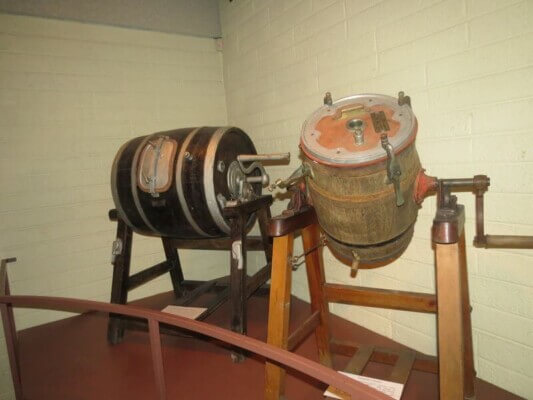
In fact, trade from Cork to the West Indies and North America was extremely important for the British, whose army made very good use of that during the American Revolution.
It is well known that casks full of butter and other food supplies made their way across the Atlantic to America to feed the British Army in their fight against the Americans.

The many displays in this excellent museum detail the history of dairy farming in Ireland and how butter was made, including information on the early practice of preserving butter in bogs.
You’ll also get to use the churning equipment, which makes for a fun, one-of-a-kind experience.
Be sure to put this on your list of the best authentic experiences in Ireland, especially if you’re visiting Cork for a couple of days.
Get Authentic Irish Food Delivered to Your Door from Food Ireland
Are you interested in finding the best authentic experiences in Ireland when you visit this year? If so, let me know in the comments section below.

